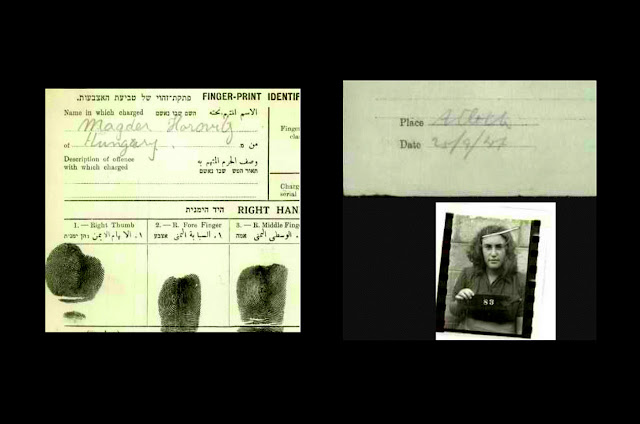S/S Haim Arlosoroff ship was built as the USS Unalga (WPG-53), a US Coastguard cutter. Later, she was sold and renamed to S/S Ulua (July 1946). On 24 January 1947 in Trelleborg, Sweden, she embarked 650 Holocaust survivors and later almost the same number in Italy.
Renamed again, as Chaim Arlosoroff (Ship Number 123) by Haganah, after she departed Italy. As S/S Haim Arlosoroff she was intercepted by British warships and ran aground at Bat Galim near Haifa port on 27 February 1947. Most of her crew and the refugees were interred in detention camps on Cyprus.
The ship S/S Haim Arlosoroff carried 1,348 ma’apilim, among them 650 young girls and boys (many of them just children) from Sweden. Most of them were Holocaust survivors that had been taken after the liberation of Bergen-Belsen camp as a result of an unusual deal between the UNRRA and Swedes that were otherwise could be found guilty to pay the war compensations. Paying the war compensations was the same as official confirmation that Sweden were Nazi supporters as it happened to Finland.
Before Israel was born in 1948 only small groups of Jews in detention camp on Cyprus were let into the country. However small quotas of children - Holocaust survivors were let before it. Later in 1947 also numerous parent with newborn children from the detention camp on Cyprus.
Among youngsters that were let into the Eretz in September 1947, were numerous former S/S Haim Arlosoroff passengers.
Reading their immigration papers it is likely that they were send to the British detention camp in Atlit and registered there. There were numerous so called unaccompanied children in the Atlit detention camp.
 |
| Looking at the second page of the documents from the Palestinian Police one can be astonished as the children/youth had to declare the youth movement they want (are) to be associated with. In Eastern Europe, many of the youth movements were Zionist in nature. Among the first youth movements in Eastern Europe was Ha-Shomer ha-Tsa'ir, which combined both Zionism and radical Socialism in its ideology. The Dror movement was similar to Ha-Shomer ha-Tsa'ir, but its members came from poorer circles. The Gordonia movement promoted a more moderate Zionist-Socialist platform, while the Ha-No'ar ha-Tsiyyoni and Bnei Akiva youth movements encouraged Zionism and Hebrew culture and religion. |

 |
Looking at the second page of the documents from the Palestinian Police one can be astonished as the children/youth had to declare the youth movement they want (are) to be associated with. In Eastern Europe, many of the youth movements were Zionist in nature. Among the first youth movements in Eastern Europe was Ha-Shomer ha- Tsa'ir, which combined both Zionism and radical Socialism in its ideology. The Dror movement was similar to Ha-Shomer ha-Tsa'ir, but its members came from poorer circles. The Gordonia movement promoted a more moderate Zionist-Socialist platform, while the Ha-No'ar ha-Tsiyyoni and Bnei Akiva youth movements encouraged Zionism and Hebrew culture and religion.
|
 |
S/S Haim Arlosoroff ship was built as the USS Unalga (WPG-53), a US Coastguard cutter. Later, she was sold and renamed to S/S Ulua (July 1946). On 24 January 1947 in Trelleborg (picture), Sweden, she embarked 650 Holocaust survivors and one month later almost the same number in Italy.
|
 |
S/S Haim Arlosoroff ship was built as the USS Unalga (WPG-53), a US Coastguard cutter. Later, she was sold and renamed to S/S Ulua (July 1946). On 24 January 1947 in Trelleborg (picture), Sweden, she embarked 650 Holocaust survivors and one month later almost the same number in Italy.
|
 |
| S/S Haim Arlosoroff was intercepted by British warships and ran aground at Bat Galim near Haifa port on 27 February 1947. Most of her crew and the refugees were interred in detention camps on Cyprus. The ship began her (last) voyage to Eretz Israel from a Swedish port Trelleborg, which made this the longest Aliya Bet voyage ever. |

















